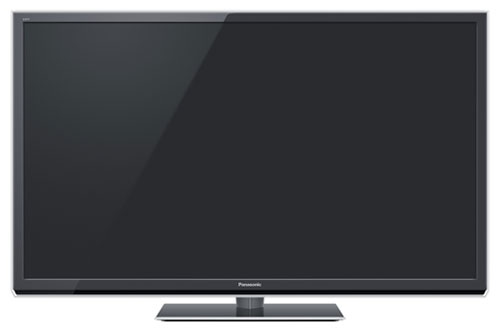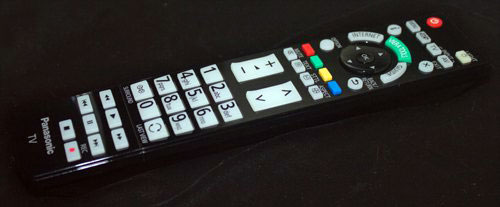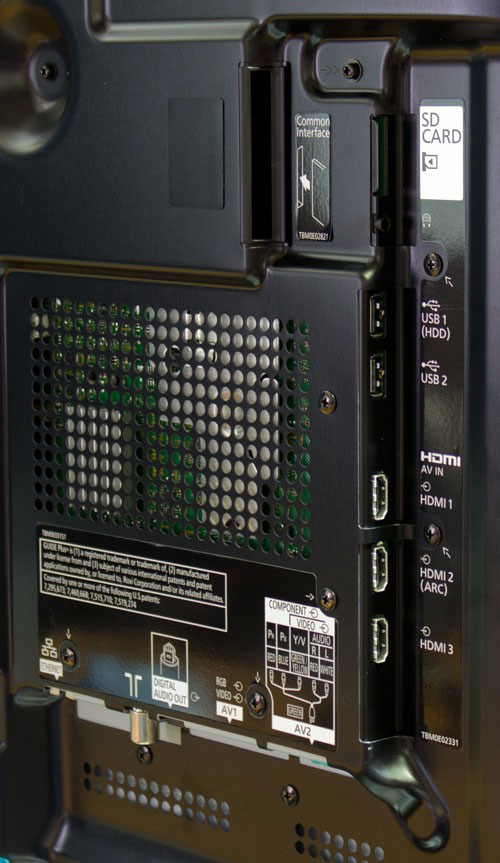Panasonic has started delivering its 2012 Plasma and LED LCD TV models for review, signalling the end of the winter-time HDTV slump, where our fickle industry loses interest in last year’s displays after the announcement of shiny new and (hopefully) improved models at the CES trade show in Las Vegas. Today, we’re looking at company’s mid-range NeoPDP 3D-capable Plasma HDTV, the Panasonic TX-P42ST50B, which is the successor to last year’s ST30 range.
(In case you’re wondering what happened to the ST40, Japanese business practices tend to avoid releasing products with the number “4”, since the Japanese pronunciation of the number sounds like the word “death”).
In Europe, including the UK, the Panasonic ST50 series comes in 42, 50, 55 and 65-inch sizes. The last two of those are especially welcome; we’ve not had panels this large in Europe before, except in the more expensive high-end ranges. It’s great to see the European Panasonic divisions catch up to the big-screen variety that the US and Canada have enjoyed for a while now.
As a mid-range model, the TX-P42ST50 features a Full HD 1080p NeoPDP panel, which Panasonic promises has been substantially re-engineered. Improvements are promised mostly in the area of motion rendition, with the Japanese manufacturer promoting a new “2000hz Focused Field Drive” on the ST50 (the step-up GT and VT series models feature “2500hz Focused Field Drive”). We’ll find out what improvements have been made to motion quality during the review process. It still features Panasonic’s excellent “Infinite Black Pro” screen coating (apparently a development rescued from ex-TV manufacturer Pioneer), which prevents the screen from appearing washed-out in more brightly lit environments. Panasonic also promises that this year’s Plasma TVs will be brighter than last year’s, with the improvements in panel efficiency being ploughed into light output rather than lowering power consumption (which makes sense, since it was already low enough, in our opinion).
There are 3 HDMI inputs, a DVB-T2 tuner (for receiving terrestrial HDTV broadcasts, such as those on Freeview HD in the UK and similar services across the continent), and finally, built-in wireless networking capabilities. Like all manufacturers, Panasonic is eager to promote the “Smart TV” concept, and the addition of built-in wireless connectivity means that these internet features are much more likely to be used.
Let’s dig in and see what’s changed with Panasonic plasmas in 2012!
Note: Due to a delay in receiving the new 3D eyewear from Japan, this review was originally published with analysis of the 2D display mode only. Panasonic supplied 3D glasses soon afterwards, so we’ve updated the review. Updated sections are marked. If this is your second visit, you can skip to the 3D calibration section or the 3D picture quality analysis.
Note: The specific model we’ve tested is the Panasonic TX-P42ST50B, which is the British 3-pin-plug version. While we did not review the larger TX-P50ST50B, there should not be any significant difference in picture performance given similar specifications bar screen size within the ST50 series.
The design philosophy of the ST50 series has been dubbed “crystal frame”. “Samsung frame” might have been more to-the-point; the Panasonic TX-P42ST50 closely resembles the excellent chassis designs from the Korean TV maker. Regardless of who came up with it first, we’re very happy with the aesthetics of the TX-P42ST50B, since it features a slim bezel, which in turn is framed by a transparent acrylic border. The whole unit is incredibly thin, to the extent that it could easily be confused with a side-lit LED LCD television. It’s also fairly light.

The panel sits on top of a newly designed stand, which is slightly more difficult to assemble than last year’s, although the provided instructions are clear. It’s still easier to put together than Samsung’s plasma televisions, which require the screen to be laid flat on a soft surface. Panasonic’s allows you to simply assemble the stand and then lower the screen onto the mounting plate, then screw it in. The final assembled TV and stand combination also feels sturdier than the Korean company’s design.
The power cable is detachable, and not moulded-in.

Finally, the remote has been redesigned, and now matches what’s been supplied with some American Panasonic HDTVs for a while now. It closely resembles the older remote, some keys have been moved around, and thankfully, all of the buttons (except the DVD controls at the bottom) are back-lit to avoid fumbling around in the dark.
The TX-P42ST50 features 3 HDMI inputs, an aerial input, inputs for USB and SD card devices, and also a shared Composite/Component video input. If you have an older SCART device, you can plug that in too. There’s an ethernet (network) hookup, but the ST50 has wireless networking built in, so we’d imagine it’ll go largely unused.
 |
| Rear: 3 x HDMI, aerial, SCART, Composite/Component inputs |
The most obvious change in terms of operation is that the much-loved(!) advertising on the programme guide (EPG) is gone, with the full screen being used for listings – in the UK model, at least. Spec sheets suggest that the advertising-heavy Gemstar/Rovi EPG is still present in some European territories.
The menu design remains the same as last year, with a clean, functional interface and legible fonts. However, new options have been introduced and some of the existing picture controls have been changed. We know for a fact that these changes will go down very well with image quality enthusiasts (a.k.a. our audience).
The top-level picture adjustment selects a preset mode. Out of these, we’re interested in “True Cinema”, which is Panasonic’s “hands-off” accurate mode, which we use for almost everything, and “Game”, which we use to reduce input lag with games. The other modes abstract either the colour or brightness distribution of the picture, so we didn’t use them.
![[Picture] menu](https://www.hdtvtest.co.uk/news/wp-content/uploads/2018/04/hdtv_Panasonic-TXP42ST50_picture1.jpg) |
![[Picture] menu](https://www.hdtvtest.co.uk/news/wp-content/uploads/2018/04/hdtv_Panasonic-TXP42ST50_picture2.jpg) |
| [Picture] menus |
First of all, calibration controls have been introduced on the ST series. From what we gather, the European ST50 series is superior to the American model in this regard, which is a real U-turn compared to the treatment this continent received in the past. Turning on “Advance(Calibration)” in the [Setup] menu will unlock [White Balance], [Colour Management] and [Gamma] menus inside the [Advanced Settings] picture menu. These aren’t the fully fledged menus present on the higher-up models, but they do allow basic 2-point Greyscale calibration, selection of a preset Gamma curve, and adjustment of the hue, saturation and luminance of Red, Green and Blue colours, which should be enough to get us well on the way to accurate images. This means that we’ll be able to tweak the Panasonic TX-P42ST50B for better picture quality than last year’s model, and we’ll be able to perform adjustments without entering hidden engineer’s menus.
Secondly, the workings of the [Contrast] control have changed. In the past, this option controlled digital white level. In other words, turning the control up too high would discard near-white details (such as the fine detailing on white clouds in a bright sky). It wasn’t possible to squeeze any more light output from the 2011 models in their most useful picture modes, making this control basically useless. On the TX-P42ST50, raising the [Contrast] control allowed us to squeeze some more brightness out of the panel, although raising it too high, as we expected, would begin crushing out some “whiter than white”details (at the level which is not commonly found in actual video material).
One other thing to add regarding [Contrast], though: if you attempt to set this control using a fully white screen, such as the “White Clipping Pattern” on the excellent (and free) AVSHD test disc, then you won’t see any difference in picture brightness. This is because of the Plasma’s Automatic Brightness Limiting (ABL) circuitry, which causes fully white images to be dimmed – apparently to reduce power consumption and/or to prevent heat buildup in the panel. To see the effects, use the combined Black/White APL pattern.
| Jump To: 1. DesignNext: Calibration3. Performance |
jQuery(document).ready(function($) { var toc = $("#tableofcontents").html(); $("#tablecontents").html(toc); });